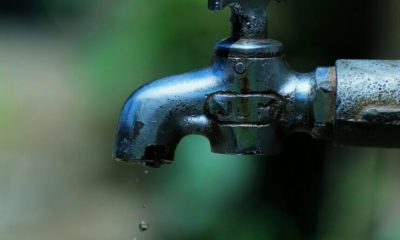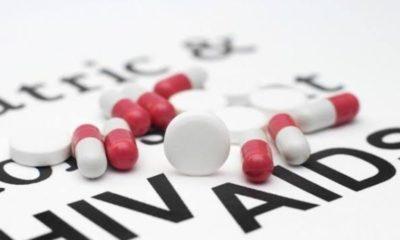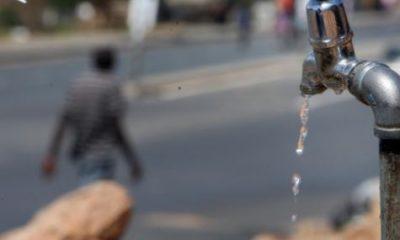News
What’s In Your Tap? SA’s Drinking Water Found Contaminated with Microplastics, Chemicals and ARVs

Shocking new research uncovers long-standing contamination in South Africa’s water sources – and we may just be scratching the surface
A quiet crisis has been seeping into South Africa’s rivers, taps and ecosystems for decades and only now are we beginning to understand its true depth.
According to findings from several studies commissioned since 2000 by the Water Research Commission (WRC) and partners including North-West University, South Africa’s drinking water and water resources are contaminated with microplastics, pharmaceutical residues, and most surprisingly, traces of antiretroviral (ARV) medication.
While the Department of Water and Sanitation says the levels are extremely low, experts warn of potential long-term effects on both human health and the environment, especially if left unchecked.
How Did ARVs End Up in Our Water?
South Africa’s globally praised HIV/AIDS treatment programme, which provides free access to ARVs, has been vital in saving lives. But it comes with an unexpected side effect: drug residues are entering sewage systems and escaping into rivers.
Spokesperson Wisane Mavasa explains:
“The active part of the medication is absorbed by the body, leaving the residual to be discharged… subsequently finding its way into the sewage system and, eventually, rivers.”
From there, some of that water is extracted by municipalities, treated, and supplied as potable drinking water. Yet current wastewater treatment systems weren’t built to remove contaminants of emerging concern (CECs) like these.
What Exactly Was Found?
The study by North-West University focused on ARVs in water and found:
-
Fluconazole, an antifungal, was the most frequently detected pharmaceutical
-
Nevirapine and Efavirenz, common ARVs, were also detected frequently
-
On average, Lopinavir and Efavirenz had the highest concentrations, though still in nanograms per litre
-
The lowest detections were for Didanosine and Zidovudine
Mavasa emphasized that these quantities are tiny, often below quantification limits and that conventional water treatment is designed for bigger threats like bacteria and faecal matter.
Still, the presence of pharmaceuticals in the water is concerning.
Why Should We Care?
While these substances won’t cause HIV or immediate health issues, prolonged exposure could lead to antimicrobial resistance, a growing global concern. There’s also little understanding yet of the ecological impact of chronic low-dose pharmaceutical pollution in rivers, dams, or drinking water.
“Pharmaceuticals like ARVs are used to treat disease, they don’t cause disease,” Mavasa clarified.
“But the environmental toxicity and long-term effects are not yet fully understood.”
One area of emerging concern is that high concentrations of ARVs in wastewater may affect bacteria-killing processes, which wastewater plants rely on. If the bacteria aren’t properly removed, other pathogens could make their way into the water supply.
Microplastics, But No Regulations
Microplastics tiny plastic particles are another confirmed contaminant, although their presence, like that of ARVs and other chemicals, is not currently regulated in most countries, including South Africa.
That’s largely because these compounds are so small, often measured in nanograms (one-billionth of a gram), and difficult to detect accurately. But as industrial, pharmaceutical, and urban waste continues to pollute rivers and groundwater, international concern is mounting.
Globally, scientists are now investing heavily in:
-
Advanced tracing methods for detecting contaminants
-
Membrane-based filtration systems and other advanced technologies to remove them
-
New environmental safety standards for emerging pollutants
Infrastructure Gaps Highlight the Bigger Problem
Municipalities returning infrastructure grants to the Treasury because they can’t spend them isn’t new. What’s new is how that lack of expertise and capacity may now also be compromising water quality.
Water quality experts have long pointed out that South Africa’s ageing wastewater infrastructure is not equipped to deal with 21st-century threats, particularly CECs, pharmaceuticals, and microplastics.
A Silent, Long-Term Threat
For now, officials say there’s no need for public panic. But they’re also not downplaying the issue.
South Africa may still have some of the best tap water in Africa, but this new wave of research signals that invisible contaminants are slipping through even the most robust systems.
The challenge now is for South Africa to invest in advanced water treatment and monitoring systems, regulate CECs, and make sure that the country’s most basic right access to clean, safe water, is truly future-proof.
{Source: The Citizen}
Follow Joburg ETC on Facebook, Twitter , TikTok and Instagram
For more News in Johannesburg, visit joburgetc.com





















